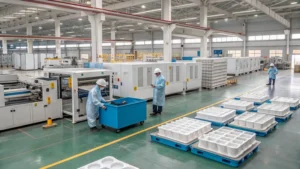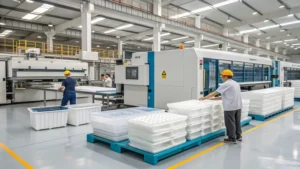
Thermoforming is a manufacturing process where plastic sheets are heated, formed into shapes using molds, and trimmed, commonly used for packaging, automotive parts, and more. As production volume increases, the cost per part typically decreases due to economies of scale1, making it a cost-effective choice for many industries.
Understanding how production volume2 affects costs in thermoforming is crucial for manufacturers, designers, and industry professionals. This article explores the intricacies of thermoforming, its applications, and the technical factors that influence cost, providing a comprehensive guide to making informed decisions.
Thermoforming is more cost-effective than injection molding for low to medium production volumes.True
Due to lower tooling costs and faster setup times, thermoforming is often cheaper for smaller runs.
Thermoforming can produce parts with uniform wall thickness.False
Wall thickness typically varies by 10–20%, which can lead to material waste and weak points.
- 1. What is Thermoforming and How Does It Work?
- 2. How Does Production Volume Affect Costs in Thermoforming?
- 3. What Are the Typical Applications of Thermoforming?
- 4. How Does Thermoforming Compare to Other Manufacturing Processes?
- 5. What Are the Key Factors Influencing Cost in Thermoforming?
- 6. How Can Designers Optimize for Thermoforming?
- 7. When Should You Choose Thermoforming Over Other Processes?
- 8. Conclusion
What is Thermoforming and How Does It Work?
Thermoforming is a versatile manufacturing process used to create plastic products by heating a plastic sheet to a pliable temperature, forming it over a mold, and trimming it to produce the final part. It is widely used across industries like packaging, automotive, and consumer goods due to its cost-effectiveness, especially for large parts and moderate production volumes.
Thermoforming, also known as vacuum forming, involves heating a plastic sheet, shaping it with a mold, and cooling it to create products like packaging trays, automotive panels, and medical device housings.
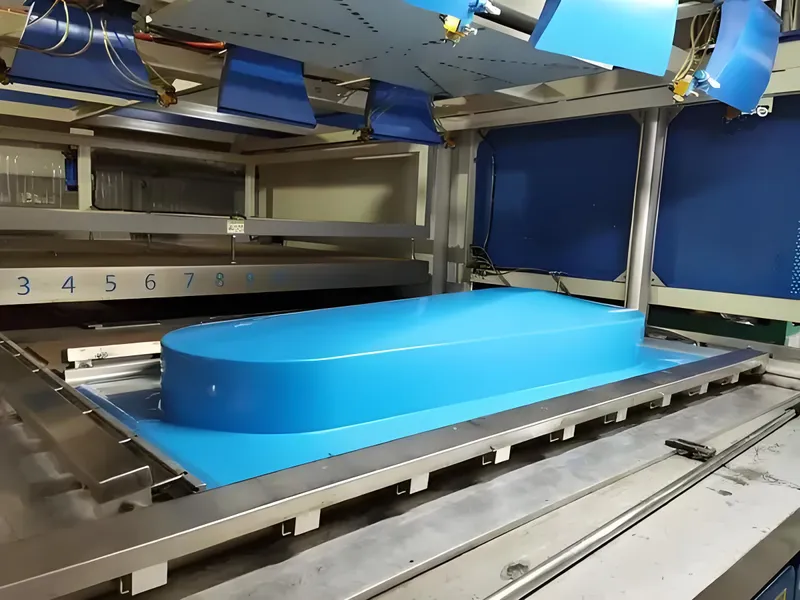
The process is highly adaptable, making it suitable for both prototyping and high-volume production. However, one of the most significant factors influencing its cost-effectiveness3 is production volume. As volume increases, the cost per part decreases due to economies of scale, where fixed costs like tooling and setup are spread over more units.
Thermoforming is only suitable for low-volume production.False
While ideal for low to medium volumes, thermoforming can also be cost-effective for high-volume production, especially for thin-gauge packaging.
Tooling costs in thermoforming are generally lower than in injection molding.True
Thermoforming molds can be made from less expensive materials like wood or aluminum, reducing initial costs.
Key Steps in the Thermoforming Process
The thermoforming process4 consists of several critical steps, each influencing the final product's quality and cost:

-
Heating: The plastic sheet is heated to its forming temperature.
-
Forming: The heated sheet is stretched over a mold using vacuum, pressure, or mechanical means.
-
Cooling: The formed part is cooled to retain its shape.
-
Trimming: Excess material is removed to create the final product.
For high-volume production, these steps are often automated and continuous, allowing for efficient, large-scale manufacturing.
| Process Step | Key Parameter | Impact on Cost |
|---|---|---|
| Heating | Heating time | Longer times increase energy costs |
| Forming | Forming pressure | Higher pressure may require more robust equipment |
| Cooling | Cooling time | Affects cycle time and production speed |
| Trimming | Mold temperature | Influences part quality and waste |
How Does Production Volume Affect Costs in Thermoforming?
In thermoforming, production volume has a direct impact on the cost per part due to economies of scale. Fixed costs, such as tooling and setup, are spread over a larger number of parts as volume increases, reducing the per-unit cost.
Higher production volumes in thermoforming generally lower the cost per part by distributing fixed costs like tooling and setup over more units, making it ideal for large-scale manufacturing.
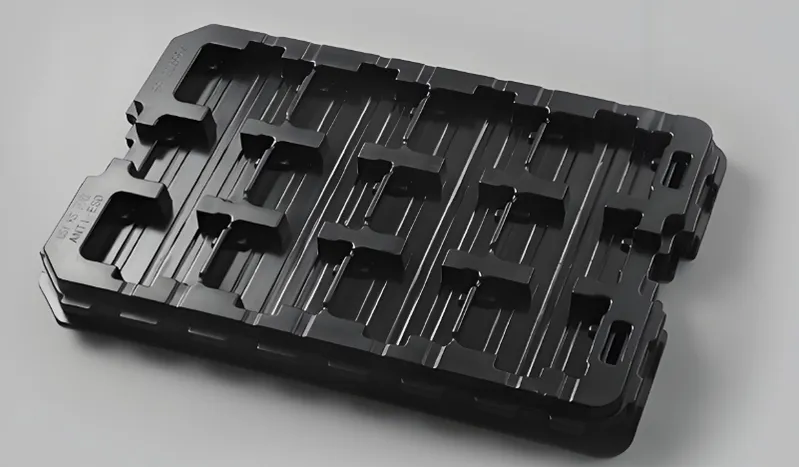
Tooling Costs and Amortization
Tooling is one of the most significant fixed costs in thermoforming. Molds can range from $2,000 to $30,000, depending on complexity and material. For low-volume production, these costs are spread over fewer parts, making the per-part cost higher. However, as production volume increases, the tooling cost per part decreases significantly.
For example:
-
Low Volume (50 parts): Tooling cost of $400 per part ($20,000 tooling / 50 parts).
-
High Volume (500 parts): Tooling cost of $40 per part ($20,000 tooling / 500 parts).
This demonstrates how economies of scale reduce the impact of fixed costs as volume increases.

Material and Waste Management
Material costs also play a role in the overall economics of thermoforming. The process requires plastic sheets, which are more expensive than raw pellets used in other processes like injection molding. Additionally, trimming generates waste that must be reprocessed, adding to the cost.
However, at higher volumes, manufacturers can optimize material usage and reprocess trim waste more efficiently, reducing the per-part material cost.
Material costs in thermoforming are always higher than in injection molding.False
While sheet materials are more expensive, efficient waste management and lower tooling costs can make thermoforming cheaper overall for certain volumes.
Reprocessing trim waste is only cost-effective at high volumes.True
The cost of regrinding and reusing trim waste is more economical when spread over a large number of parts.
What Are the Typical Applications of Thermoforming?
Thermoforming is used across a variety of industries due to its flexibility and cost advantages for specific production volumes.
Thermoforming is commonly used in packaging, automotive, healthcare, aerospace, and consumer goods for products like trays, panels, and housings, offering a balance of cost, speed, and design flexibility.

Packaging Industry
In packaging, thermoforming is ideal for high-volume, thin-gauge products like disposable cups, food containers, and blister packs. Its ability to produce large quantities quickly makes it a go-to process for consumer packaging.
Automotive Industry
For automotive applications, thermoforming is used to create large, structural components like dashboards and interior panels. The process is well-suited for medium-volume production, where tooling costs are manageable, and part size is a factor.

Healthcare and Medical Devices
Thermoforming is also prevalent in the medical field for producing sterile trays, equipment housings, and other components that require clarity and cleanliness.
Thermoforming is only used for packaging applications.False
While packaging is a major application, thermoforming is also widely used in automotive, healthcare, and consumer goods industries.
Thermoforming is ideal for large, complex parts.True
Its design flexibility allows for the production of large parts with intricate shapes at a lower cost than other processes.
How Does Thermoforming Compare to Other Manufacturing Processes?
When deciding on a manufacturing process, it’s essential to compare thermoforming with alternatives like injection molding, blow molding, and metal stamping.
Thermoforming offers lower tooling costs and faster development times compared to injection molding, making it ideal for low to medium volumes, but it may not be as cost-effective for very high volumes or complex parts.
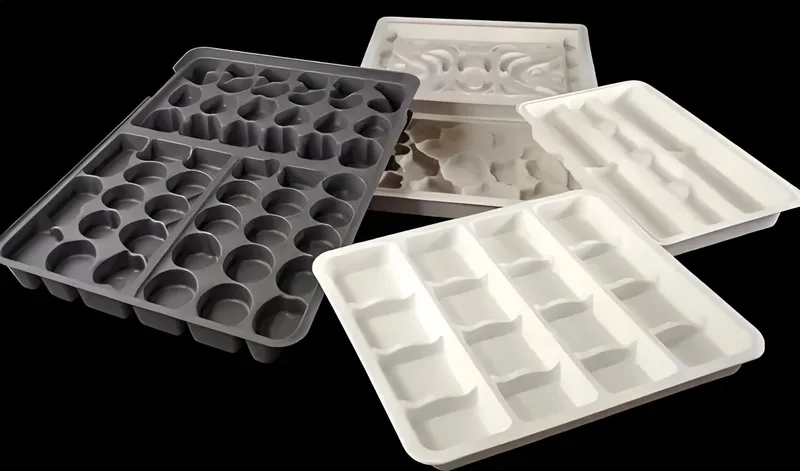
Thermoforming vs. Injection Molding
-
Tooling Costs5: Thermoforming molds are cheaper ($2,000–$30,000) compared to injection molding dies ($10,000–$100,000+).
-
Production Speed6: Injection molding is faster for high volumes, while thermoforming is quicker to set up for smaller runs.
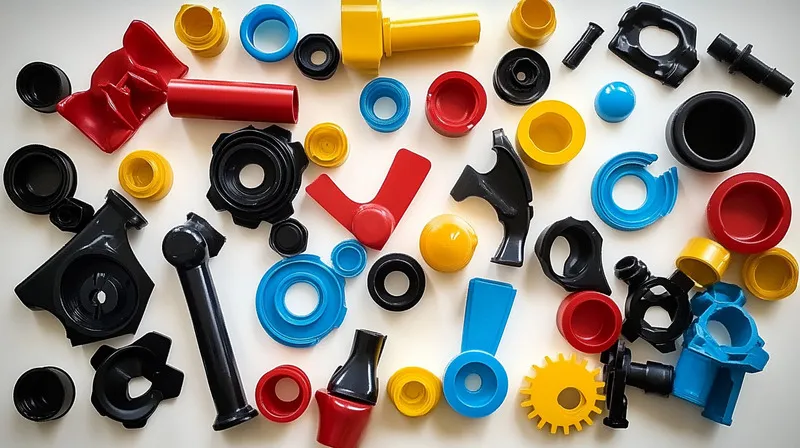
- Part Complexity: Injection molding can produce more complex parts with undercuts, whereas thermoforming is limited to simpler geometries.
Thermoforming vs. Metal Stamping
- Material: Thermoforming uses plastics, while metal stamping uses metals, making them suitable for different applications.
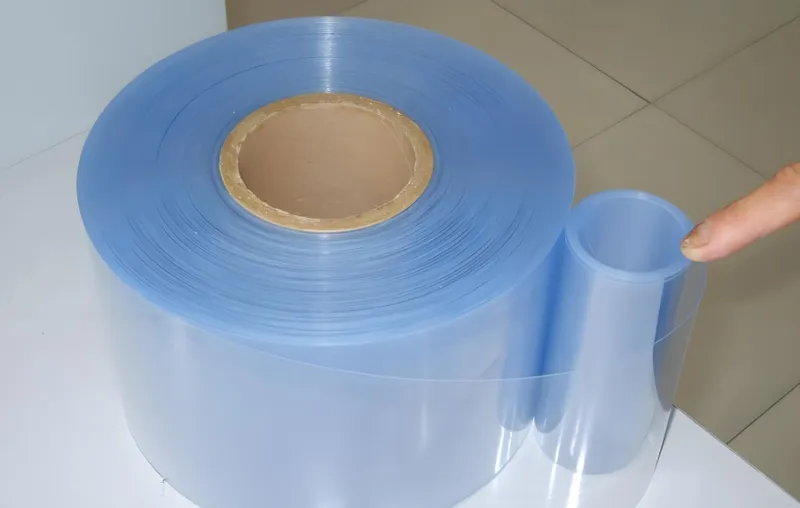
- Tooling: Metal stamping requires expensive dies, but for very high volumes, it can be more cost-effective than thermoforming.
| Process | Tooling Cost | Best for Volumes | Part Complexity |
|---|---|---|---|
| Thermoforming | Low to Moderate | Low to High | Moderate |
| Injection Molding | High | High | High |
| Metal Stamping | High | Very High | Low to Moderate |
Injection molding is always more cost-effective than thermoforming for high volumes.False
For very large parts or specific applications, thermoforming can remain competitive even at high volumes.
Thermoforming cannot produce parts with high precision.True
Due to variations in wall thickness and material shrinkage, thermoforming is less precise than injection molding.
What Are the Key Factors Influencing Cost in Thermoforming?
Several factors influence the cost of thermoforming, beyond just production volume.
Key cost factors in thermoforming include tooling7, material selection8, part size, and waste management9, all of which are affected by production volume.

Tooling Costs
As mentioned, tooling is a significant upfront cost. However, for high-volume production, this cost is amortized over many parts, reducing its impact.
Material Selection
Different materials have varying costs and forming requirements. For example:
-
Polystyrene (PS): Low cost, used for packaging.
-
Polyethylene Terephthalate (PET): Higher cost, used for food packaging due to its barrier properties.
Material choice also affects energy consumption, as some plastics require higher forming temperatures.

Part Size and Complexity
Larger parts require more material and longer cycle times, increasing costs. Complex shapes may necessitate more expensive molds or additional forming steps.
Waste Management
Trim waste must be reprocessed, which adds to the cost. However, at higher volumes, the efficiency of reprocessing improves, reducing the per-part cost.
Larger parts always cost more to produce in thermoforming.True
Larger parts require more material and longer cycle times, increasing both material and production costs.
Material waste in thermoforming cannot be reused.False
Trim waste can be reground and reused, though it may affect part quality.
How Can Designers Optimize for Thermoforming?
Designing for thermoforming requires consideration of process limitations to ensure cost-effectiveness and part quality.
Designers should account for draft angles10, avoid undercuts, and aim for uniform wall thickness11 to optimize thermoforming production and minimize costs.

Design Checklist for Thermoforming
-
Ensure draft angles of 1–2° for easy demolding.
-
Avoid sharp corners and undercuts to prevent material trapping.
-
Maintain uniform wall thickness to reduce waste and ensure strength.
-
Account for material shrinkage during cooling.
-
Consider part size: Large parts may require multiple sheets, increasing costs.
These guidelines help designers create parts that are easier and cheaper to manufacture.
Uniform wall thickness is critical in thermoforming.True
It minimizes material waste and ensures consistent part strength.
Thermoforming can easily produce parts with undercuts.False
Undercuts require additional tooling or secondary operations, increasing complexity and cost.
When Should You Choose Thermoforming Over Other Processes?
Selecting the right manufacturing process depends on several factors, including production volume, part complexity, and material requirements.
Choose thermoforming for low to medium production volumes, large parts, or when lower tooling costs and faster development times are priorities.

Decision-Making Guide
-
Production Volume: For low to medium volumes (e.g., 250–3,000 parts annually for thick-gauge), thermoforming is often more cost-effective.
-
Part Size: Ideal for large parts where other processes like injection molding would be prohibitively expensive.
-
Complexity: Best for parts without undercuts or intricate details.
-
Lead Time: Faster setup makes it suitable for prototyping and quick-turn projects.
For very high volumes or complex parts, consider alternatives like injection molding or metal stamping.
Thermoforming is the best choice for all plastic part production.False
While versatile, it is not suitable for very high volumes or parts requiring high precision.
Thermoforming offers faster development times than injection molding.True
Lower tooling complexity allows for quicker setup and production starts.
Conclusion
Thermoforming is a highly adaptable manufacturing process that offers significant economies of scale, making it cost-effective for a wide range of production volumes. By understanding how volume impacts cost, businesses can optimize their manufacturing strategies, balancing fixed costs like tooling with variable costs like materials and waste management. While thermoforming excels in producing large, complex parts at moderate volumes, it may not be the best choice for very high-volume production or parts requiring extreme precision. By considering factors like production volume, part size, and material selection, manufacturers can leverage thermoforming to achieve cost savings and efficiency.
-
Learning about economies of scale can help businesses make informed decisions about production volume and cost management. ↩
-
Understanding the impact of production volume on costs can help manufacturers optimize their processes and pricing strategies. ↩
-
Exploring the factors that contribute to the cost-effectiveness of thermoforming can provide valuable insights for industry professionals. ↩
-
Understanding the thermoforming process is crucial for optimizing production and reducing costs in manufacturing. ↩
-
Understanding tooling costs can help you make informed decisions about manufacturing processes and budget effectively. ↩
-
Learn about production speeds to determine which manufacturing process is best suited for your project needs. ↩
-
Understanding tooling costs is crucial for evaluating manufacturing processes and optimizing production budgets. ↩
-
Exploring material selection can help you make informed choices that enhance product quality and reduce costs. ↩
-
Learning about waste management can lead to cost savings and improved sustainability in manufacturing processes. ↩
-
Understanding draft angles is crucial for ensuring easy demolding and optimizing production efficiency in thermoforming. ↩
-
Maintaining uniform wall thickness reduces waste and enhances the strength of thermoformed parts, making it a key design consideration. ↩



